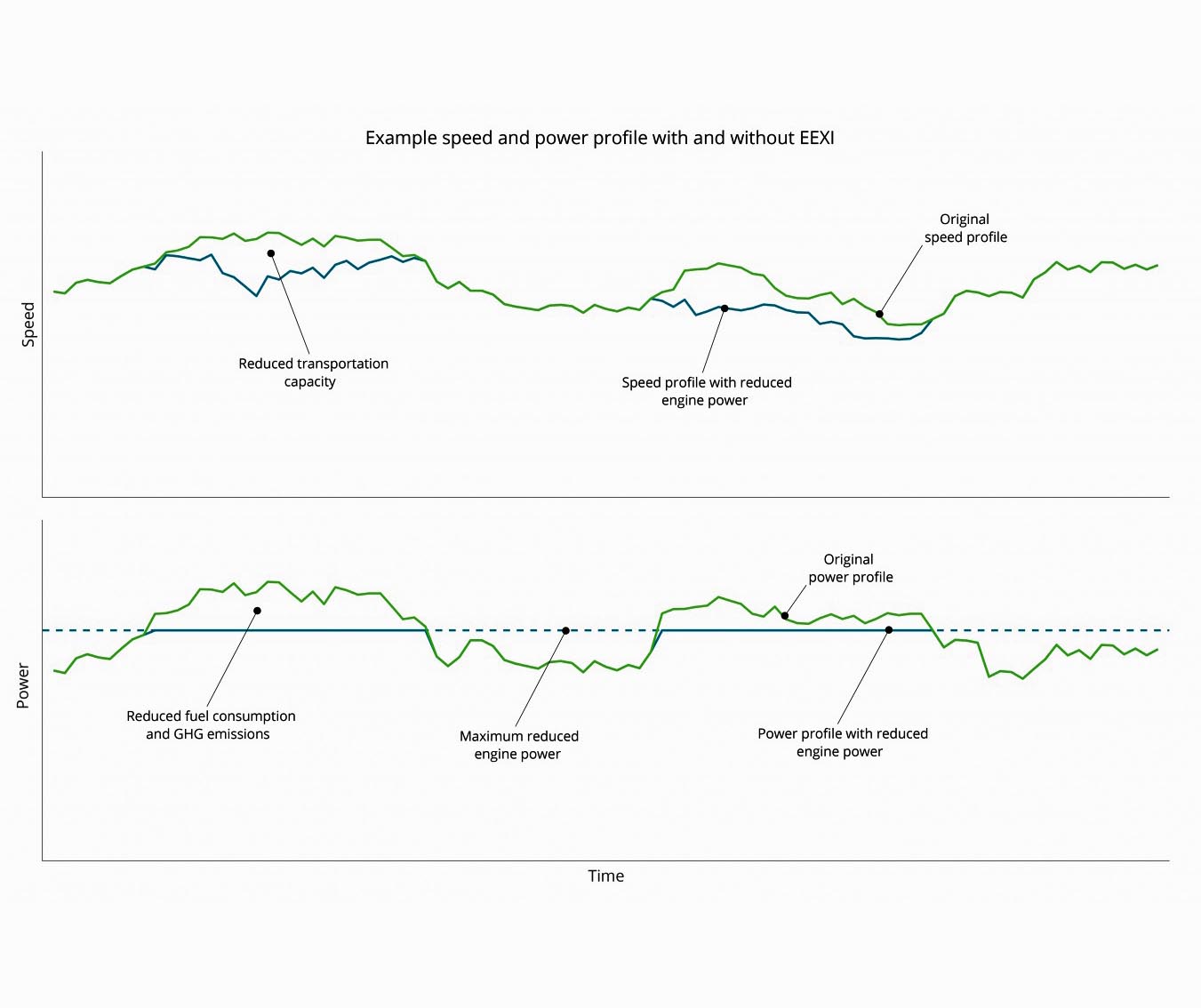Finland-based maritime software specialist NAPA has shared preliminary results of its latest research into the potential effect of EEXI Energy Efficiency Index for Existing Ships) on the global bulk carrier fleet.
EEXI measures and restricts CO2 emissions per transport work, purely considering the ship’s design parameters. One of the most common means of complying with EEXI is likely to be through limiting engine power. NAPA’s study maps EEXI requirements and engine power limitation onto real-life operations, including detailed weather data and records of real routes and speed profiles cross-referenced with the NAPA ship model database, which includes vessel-specific performance models for the global fleet. The data used by NAPA was drawn from voyage data from 1500 bulkers during 2019, asking ‘if EEXI had been introduce dthen, what effect would it have had on carbon emisions’. NAPA used its Fleet Intelligence platform to study the true operational profiles of these vessels in actual weather conditions, whilst analysing how the maximum engine power limitation could have impacted these operations.
The data shows that the engine power limitations required by vessels to comply with EEXI would only have come into effect at high-speed peaks. Therefore, for most of the year, if EEXI had been in effect, vessel operations would have remained largely similar. In addition, the speed reductions required by EEXI would have reduced the transportation capacity by an average of 2% for bulkers. However, the impact on transportation capacity was strongly dependent on the year in which the vessel was built, ranging from under 2% for newer vessels and up to 6% for vessels built in 2012. This indicates that EEDI, which came into force more recently, helped align vessels towards the current standard.
The NAPA study found that the implementation of EEXI would reduce CO2 emissions by an estimated 6.6% and carbon intensity by 4.6% on bulk carriers.
Teemu Manderbacka, Lead R&D Engineer, said: “While this is a good start, it shows the gap between what EEXI can achieve and how much more ground there is to make up. It shows why, at MEPC 77, to truly match the level of ambition that has come out of COP26, the IMO member states will need to prioritise efficiency.
Manderbacka went on to says that the study “does, however, demonstrate that EEXI can reduce carbon intensity and that the carbon savings outweigh the reductions in lost transport capacity. It’s one step on a much longer journey.”
Ossi Mettälä, Senior Customer Success Manager, NAPA, said: “It was really important that we could simulate this regulation onto real-life operations. This helped give us an accurate picture of just how far we have to go to reach the IMO’s targets – or the more ambitious targets of net-zero by 2050. The tools that we used to analyse the problem can also help us solve it, as they would enable vessels to operate more efficiently and provide all stakeholders with greater insight into misaligned incentives and practices, such as rushing to wait. It underlines how there remains a huge amount of latent inefficiency in shipping that we can resolve simply by using data to shape our operations better.”



